The elephant in the tomb: Finding the Mycenaean ‘blueprint’ for rock-cut chambers
Daniel Turner investigates the ascendance and decline of multi-use Late Bronze Age tombs in Greece.
Transplant a lumbering University of Alabama alumnus into an artificial mini-cave meant for elite bodies in southern Greece 3400 years ago and you’ve pictured the gist of my PhD fieldwork.[1]
As part of the European Research Council (ERC)-funded SETinSTONE project (PI Prof. dr. Ann Brysbaert), I sought to answer one of many lingering questions over the rise and spectacular fall of Mycenaean Greece during the Aegean Late Bronze Age (ca. 1600–1000 BC): the ascendance and decline of (seemingly) expensive multi-use tombs. Multi-use is apt here because the tombs were designed especially to be reopened, with some being used more than 20 times over the span of centuries. Originally, however, they were built with pomp to elevate those mourning the passing of a well-connected person, the destination of value-laden processions reflected to us now through stylised scenes depicted on pottery.
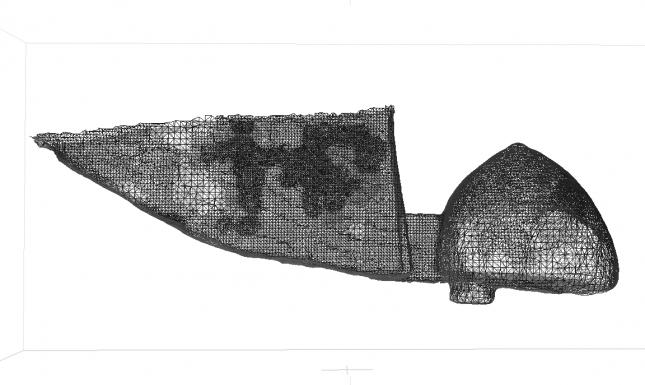
Aside from creating 3D models of the tombs (Figure 1), my focus fell on how they were conceived and built by local labourers, with astounding fidelity to an arbitrary shape and scale recognisable as iconic more than three millennia later. Were the tombs simply garish monuments to an out-of-touch elite that ran afoul of tough times in the twelfth century BC, or did the smaller, less flashy tombs represent inclusive opportunities for families who could not afford to send their loved ones off in more lavish style? These and other questions, more neutrally worded, I attempted to answer in a monograph, Grave Reminders: Comparing Mycenaean tomb building with labour and memory, due to be published Open Access with Sidestone Press before the end of 2020. Here, I give the condensed version, absent the shackles of academic writing.
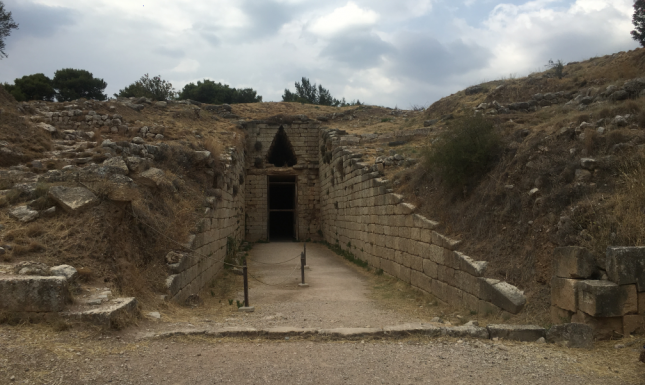
Whether built of stones like the famous beehive-shaped tholos tombs or carved directly from bedrock like the far more numerous chamber tombs (Figure 2), Mycenaean multi-use tombs took on a tell-tale tripartite shape comprising an entrance passage (dromos), threshold (stomion), and burial vault (thalamos). They were built with handheld tools (e.g., bronze chisels, rasps, and hammerstones) and carts or sleds to deliver materials and haul away spoil. Inventions of the pulley and simple crane were still centuries and miles away, leaving only the creative use of levers, ramps, wheels, rollers, and oxen to shift bone-shattering weights, including lintel stones weighing more than 100 tons.** Why go to such trouble for the dead?
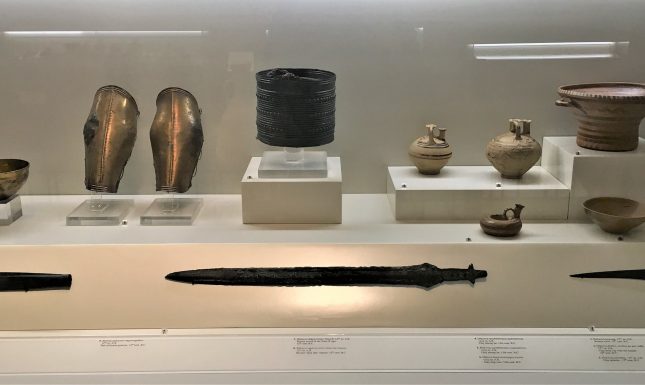
The short answer has been to see the tombs as ‘vaults’ for prestige and memory, allowing families to claim mythical ancestry and thereby consolidate power for their living descendants. This fits well with the cults that revisited the tombs centuries later, during the so-called Greek Dark Ages, partly inspiring the Homeric epics known to many now as the legacy behind the movie Troy with its A-list ensemble cast. Death simply meant more than the ‘long sleep’ or ‘passing over’ metaphors familiar to us. By reopening closed tombs, individuals were confronted by a past perhaps too remote to remember, not to mention the otherworldly sights and smells of stagnant decay. Most burials would be moved, seemingly swept to the side or reinterred into collective pits to make room for new burials. Their accompanying objects, if any, greeted attendants with a time capsule for pots, jewellery, and weapons (Figure 3). Remains from within the tombs, when not robbed in antiquity or more recently looted, tell us much about who ended here. What about those who built the tombs?
The most common questions I received in presenting this research had to do with the identity of the tomb builders. Who were they, how were they trained, and how were they rewarded? We don’t know exactly. Precious few accounts written by Mycenaean scribes in their Linear B script have survived, and those that did were only fortuitously preserved in fires that engulfed palatial centres during the troubled thirteenth and twelfth centuries. These tablets have more to do with tracking regional economies—forerunner accounting records for grain disbursements and head-counting herds. Seldom do these records touch upon labour organisation, and no architectural ‘blueprint’ or instruction manual has survived if they were ever produced on durable media. How then do we reconstruct who tomb builders were and how they operated? By analogy, we know from Early Dynastic Egypt and Greco-Roman Antiquity that preindustrial builders could be free or enslaved, paid or boarded, trained or unskilled, professional or hobbyist. For my purposes, the average Mycenaean tomb builder was a competent, cooperative (not coerced) member of the local community who took part in construction not on a professional, full-time basis, but as an ad hoc participant in the prestigious act of erecting a durable monument to a fallen neighbour. That story changes of course when dealing with the technical challenge of large tholos tombs, which demanded a trained workforce and visionaries familiar with the process as it evolved from earlier vaulted tombs on Crete and the mainland. Experimentation occurred, but it was limited, either by social tolerance for deviant designs or the unfortunate consequences of a collapsing tomb. The two most common shapes for chambers were in apparent imitation of houses (four-sided with pitched ceilings) or tholos tombs (rounded with vaulted ceilings).

Scale, or the size of a tomb, is more straightforward to study, as is the relative cost of building one. Fortunately, our ability to manually cut and move earth and stone has not changed all that much, as there are only so many intuitive ways one can dig a hole (Figure 4). Depending on the tool, material type, and physical conditioning of the wielder, rates of progress for simple construction tasks can be estimated from timed observations. These have been recorded in historical, ethnographic, and experimental accounts of the tasks in question, allowing for an entire subdiscipline of archaeological research known collectively as labour costs or ‘architectural energetics’ as coined by Elliot Abrams (How the Maya Built Their World). To spare others the laborious work of finding appropriate task rates in scattered accounts, I indexed a range of common activities and rates for a ready-made approach to preindustrial labour. Using even a high-cost range, I found that most chamber tombs could be built in less than a week by fewer than 10 able-bodied workers at long-used Mycenaean cemeteries in Achaea (north-western Peloponnese).
By surveying 94 (mostly) chamber tombs, only 41 of which were reasonably well-preserved to warrant full comparisons, I had enough data to run correspondence analyses on what made the tombs appear similar to the naked eye. Through photogrammetry and reflectorless total station survey, measurements could be accurate to within a few millimetres, far beyond what would have been important or even discernible to Mycenaean builders. In the 41 well-preserved examples, I found something close to a standard design influencing how to shape and scale multi-use tombs during the fifteenth and fourteenth centuries, which would continue to be reused until the eleventh century in some cases. How did builders working years and miles apart in cramped, dark spaces, create such ubiquitous tombs? The answer may lie with collective memory. That is to say, generations of oral histories, teachings, and fossilised imaginations created—and perpetuated—building legacies with architectural memories. This is not your episodic individual memory that threatens half-remembered events from childhood. Rather, it is closer to shared family legends of connections to important historical events, whether or not they are based in fact. The key comes in storytelling, the primary conveyor for collective memory.
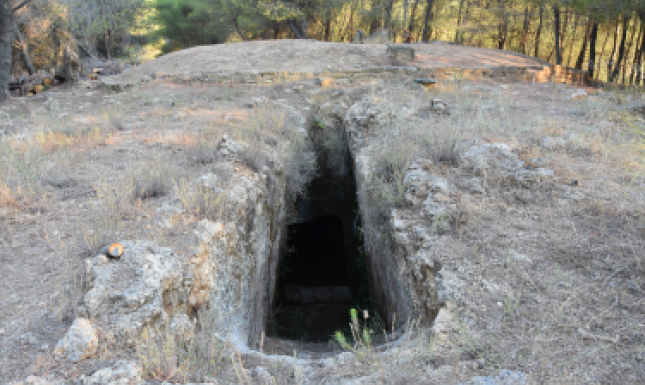
One of the cemeteries where I worked was old by the time chamber tombs began to flourish across the southern Greek mainland during the fifteenth century. This cemetery held nearly every tomb type known from the Late Bronze Age and some from the end of the Middle Bronze Age, activity spanning more than six centuries.***
Many types even overlapped in their use or were deliberately reincorporated into much later tomb styles, such as the positioning of chamber tombs around earlier tumuli (Figure 5). The choice for which tomb type to build and where in relation to others seemed to follow cues from outside the cemetery, tracking generational or factional preferences and literally carving these into the enduring space of the cemetery. Another cemetery, 50 km to the northeast yet occupying much the same socio-cultural space, boasted nearly as long of a use period. However, builders here focussed almost exclusively on chamber tombs, experimenting more with their shape and scale in a cosmopolitan, ‘new money’ style detached from older traditions. No matter the grand sense of scale envisioned by Achaean tomb builders, their largest tombs paled in comparison to another case study, the Menidi tholos just north of Athens. Here, builders during the fourteenth century erected a monument rivalling those of the major palatial centres, up to 22 times the size and 71.5 times the cost of the standard chamber tomb from Achaea. Not big enough? The largest known tholos tomb, the Treasury of Atreus at Mycenae, would envelop 126 standard chamber tombs and cost as much as 803.5 of them. Who built that and why leaves small wonder for the legendary explanations of the Atreidae, but something distinctly human survives behind its intent to cheat oblivion. Percy Shelley’s Ozymandias, and every megalomaniac before or after, would be proud.
Notes
* Alabama affiliates collectively fall under the moniker The Crimson Tide, though their mascot suits up in a caricature of an African elephant affectionately known as ‘Big Al’. Yes, I’m the ‘elephant’ in the title.
** Such as the 120-ton lintel used in the Treasury of Atreus at Mycenae.
*** Portes in western Achaea hosted tumuli, tholoi, rock-cut chamber tombs, cists, and built chamber tombs.


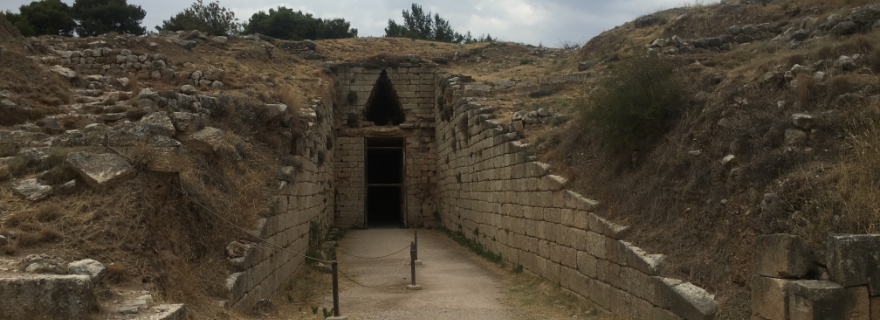
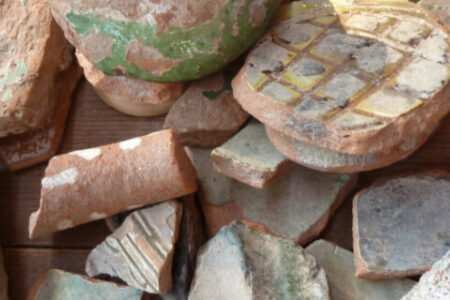
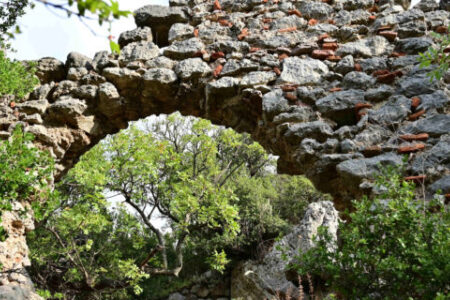
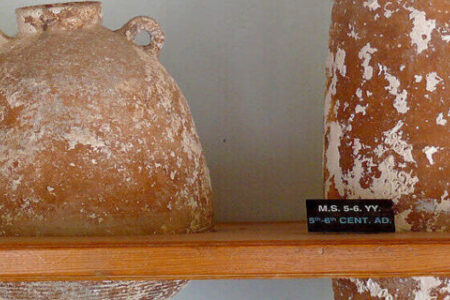
0 Comments